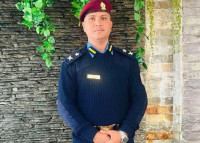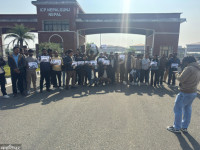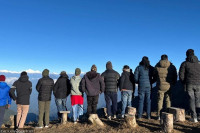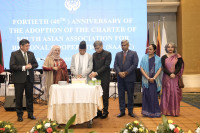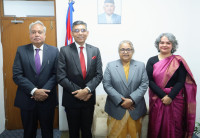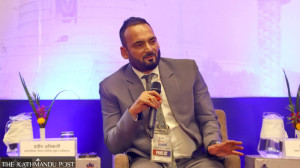National
Stigma prevents leprosy patients from seeking medical help
Under medication of leprosy since the past 11 days, 22 year-old Bir Bahadur Ale is concerned whether he can live a normal life.
Moti Lal Poudel
However, Ale managed to conjure up the guts to seek medical assistance and reached the International Nepal Fellowship (INF), Birendranagar to seek medical assistance only after experiencing deformities in his hands and legs due to the disease.
“Fearing social stigma attached to leprosy, I made a huge mistake by not seeking medical help on time. It was only after the deformities rendered me physically disabled that I came to the hospital,” Ale lamented.
According to Udaynath Yogi, INF’s Out Patient Department in-charge, Ale’s condition had reached its extremity as he started developing deformities and ulcers due to the lack of timely treatment.
“Although the medication will cure his disease, further treatment is necessary to treat his deformities,” Yogi said.
Judging how Ale had been reluctant to show his feet to the doctors, Yogi said the fear of social stigma was deeply embedded in Ale’s psychology.
Like Ale, Dil Bahadur Khatri of Chinchu-3 has become an outcast in his own family. According to Khatri, after learning that he had visited INF for treatment, his newly-wed wife had left him stating that she would never have married him had she known about his condition. Unlike Ale, Khatri had been cured of the disease 11 years ago, but had reached the INF after it started manifesting for the second time.
While the aforementioned two cases lays bare the extent of the stigma attached to the chronic infectious disease, many youths living in backward communities will, in all likelihood, continue to turn victims to the curable disease unless a change is brought about in the perspective of the society, health personnel said.
Although the state claims that the disease has been eradicated, the number of patients visiting medical institutions has not decreased. According to INF, Surkhet, three new leprosy patients were identified during mid-Oct to mid-Nov alone. Their records also revealed that 30 severely affected and six new patients had been identified from mid-July to mid-Oct in the district.




 18.12°C Kathmandu
18.12°C Kathmandu
